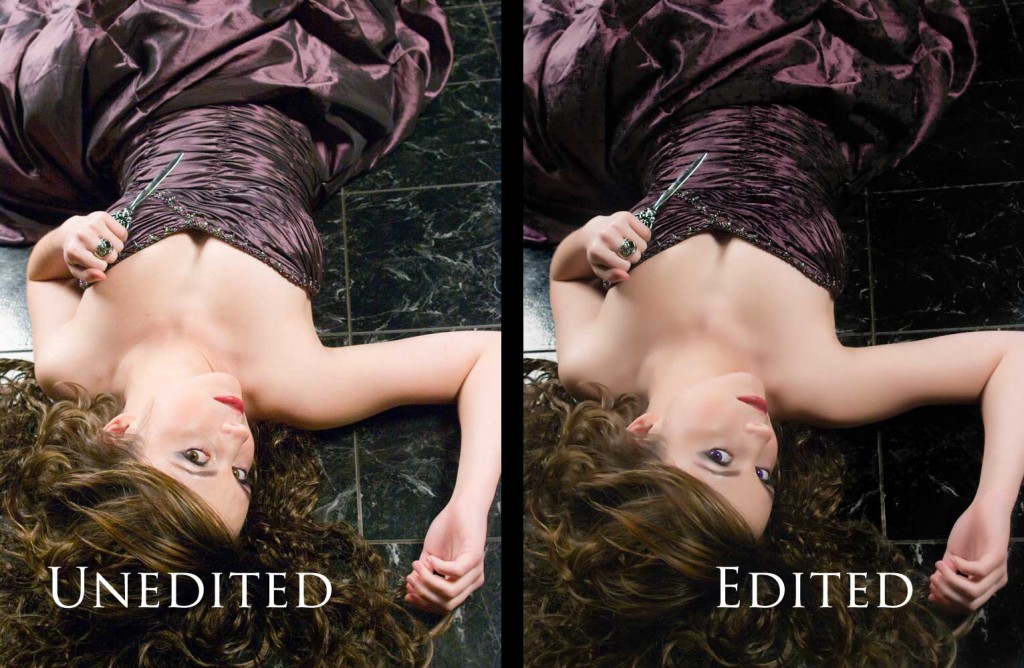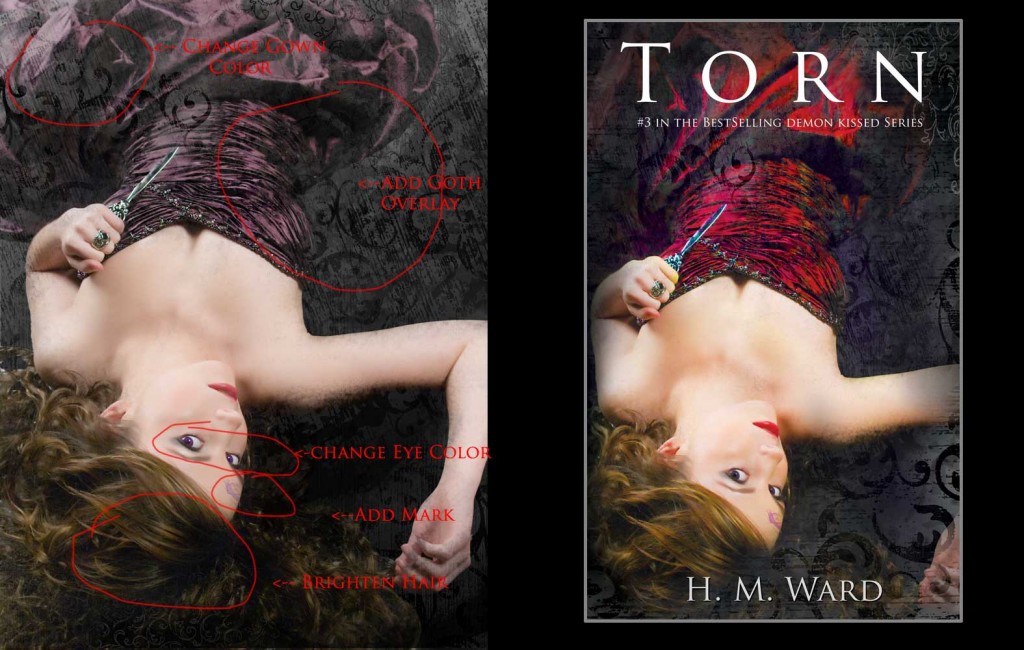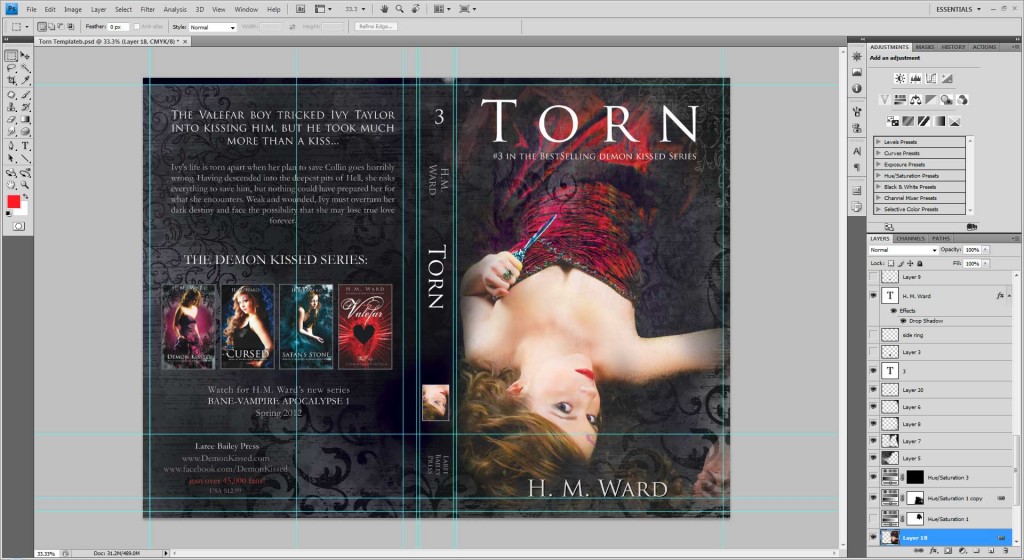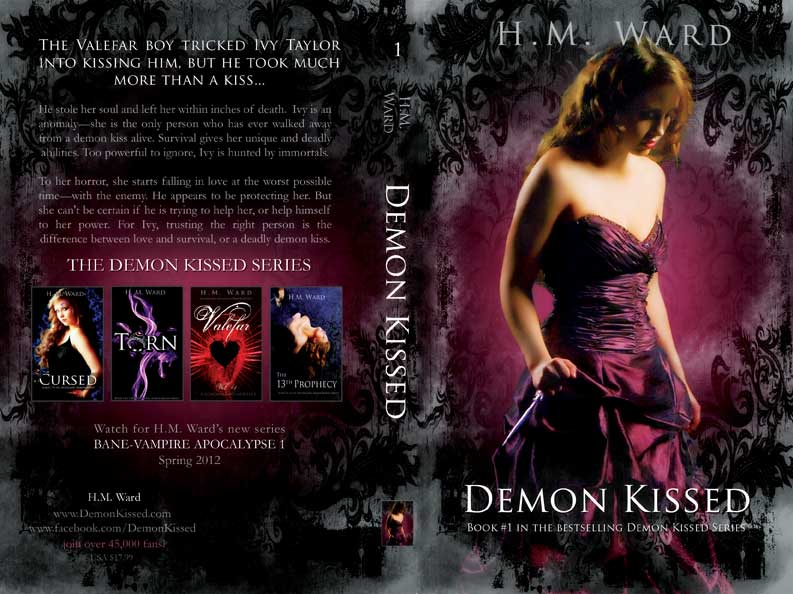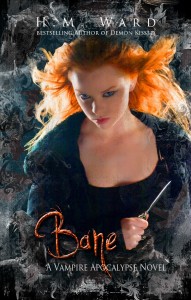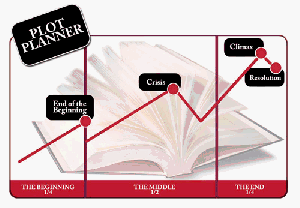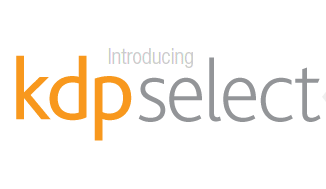 Those of you who have known me for a while probablly noticed that one of my cardinal marketing concepts is free does not work. Giving things away for free diminishes their value, because people get stuck on the fact that it was free, and won’t cross over to actually paying for your product. The concept “once free, always free” holds true in all things that aren’t of an addicting nature. This goes with my studio, artwork, or books.
Those of you who have known me for a while probablly noticed that one of my cardinal marketing concepts is free does not work. Giving things away for free diminishes their value, because people get stuck on the fact that it was free, and won’t cross over to actually paying for your product. The concept “once free, always free” holds true in all things that aren’t of an addicting nature. This goes with my studio, artwork, or books.
General rule of thumb: Free is bad.
Enter KDP Select and their 5 days free promo. I remember getting the email while I was sitting, eating lunch at Disney World last December. I thought it was an interesting concept, but free doesn’t work. As a marketing person, I know this. But I’m still staring at it wondering if it can be used as a tool.
As for the lending library, I thought that sounded like a wonderful idea, as a Kindle owner and as an author. There were two major downsides for me:
- I’d get paid less for the title that was enrolled.
- I’d lose revenue from Barnes&Noble on that title.
So, I didn’t rush to sign up all my titles. In fact, I waited a month to hear what the first wave of Guinea Pigs had to say. This is what they said about the lending: The 99centers were doing the happy dance. They got paid about $1.70 per lend and their books were given visability by appearing in the people who bought this also bought scrolling marquee on Amazon’s listing pages. That alone is major, but my books already had those. My rankings have gotten into the coveted overall bestsellers list, appearing in the top 300 paid books on kindle, and held many #1 slots in different categories.
As I tried to find more info about KDP Select, all the chatter was about the free days, and a theory emerged from all these reports. It’s being called “bounce.” To understand bounce you need to understand how the bestseller lists on Amazon work. Here’s a drive-by version.
First of all the paid bestseller list and the free bestseller list on Amazon are two different lists. And then there are more category lists, and then there is the popularity list. The pop list has nothing to do with sales. The popularity list is driven primarily by the free promos and the lends. So it’s directly anchored to titles enrolled in KDP Select. The popularity list is big and eye catchy, and most people don’t even realize they are on it. Research has shown that this list is important.
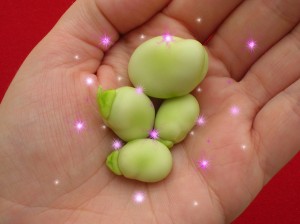 This is where the bounce theory comes in. What is it? In short, it’s the afterglow that your book has had after its scandlous free exposure via the promo days is over. Due to the fact that your book was free, the theory states that the book’s rank rises on the free list – and the popularity list – and that when the promo is over, your book is still sitting pretty on the popularity list before it falls back to its regular ranking. This is the bounce–the afterglow period before your book comes back down. It’s supposed to get more paid sales during this time.
This is where the bounce theory comes in. What is it? In short, it’s the afterglow that your book has had after its scandlous free exposure via the promo days is over. Due to the fact that your book was free, the theory states that the book’s rank rises on the free list – and the popularity list – and that when the promo is over, your book is still sitting pretty on the popularity list before it falls back to its regular ranking. This is the bounce–the afterglow period before your book comes back down. It’s supposed to get more paid sales during this time.
The first time I tried the promo day and offered the VALEFAR title for free, it was for 24 hours only. I plugged it the way I normally do on my facebook page, twitter, and blog. As a result, it climbed to around 2,000 (which was slightly worse than the ranking achieved when the title was first released) and following the promo period, the ranking/ sales quickly sunk like a stone. There was no bounce. The rank and sales were smashed, dropping about 20,000 lower than it was prior to the promo. It took about 60 days to recover to it’s previous sales rank.
Which brings me back to where I am now. I’m testing the bounce theory and giving it a better chance. The theory says the higher you rise on the free bestseller list, the better the bounce after the promo is over. Maybe I didn’t bounce my book hard enough last time. So, let’s try again. I still think that free is bad, and my expectation is that KDP Select isn’t for me. I’m skeptical. I’m not a believer, but I’m giving it a try and will report my findings here.
To ensure that I get the best results, I am going to drive the free purchases as high as possible, ideally into the top 100. If you want to help me test my KDP Select theory, spread the word. If we get a hard bounce, and the book hits the top 100 and then sinks like a stone, you guys will know it was a waste of time and money.
Here are the OPERATION BOUNCE breakdowns so far:
Prior to promo free days: I promoted the free days for about 5 days prior on facebook, twitter, and submitted the info to Pixel of Ink and other kindle bargain sites. The sales rank prior to the promo was ~30K. When I announced the free days, the rank dropped to 75K as people stopped buying in expectation of getting it for free. Starting at 10am on the day of the promo, I facebooked, tweeted, and spread the word that today’s the day of the free promo, drawing attention to it. I also submitted to Indie Book List, Bargain ebook Hunter, and The Frugal Reader. I didn’t do this last time, not to this extent.
My hourly book stats for Valefar:
- March 24th (9:00am) Rank 27,874 (Tweeted to #kindle #free, posted on FB, blog, and email)
- March 24th (10:00am) Rank 1,200
- March 24th (12:30pm) Rank 1,300
- March 24th (3:15pm): Rank 1,188 (148 free books have been claimed so far)
- March 24th (4:28pm) Rank 877 (haven’t done anything else or noticed any new sources picking it up)
- March 24th (7:31pm) Rank 832 (was retweeted a one time)
- March 24th (9:26pm) Rank 804
- March 24th (10:31pm) Rank 780 (last check for tonight. noticed uk store rank is at 1,009. Been retweeted 3x. Nothing majorly major. Expecting the rank to rise overnight, since that’s what it usually does with paid sales).
- March 25th (9:10am) Rank 783
- March 25th (2:39pm) Rank 917 (Tweets, RTs, and posting again now)
- March 25th (6:18pm) Rank 1,094
- March 25th (9:23pm) Rank 1,215 (RTs, Tweets, & FB)
- March 26 (9:20am) Rank 987 (Haven’t done anything since yesterday)
- March 26 (3:01pm) Rank 1,144 (several RTs)
- March 26 (6:52pm) Rank 1,248
- March 26 (10:38pm) Rank 1,128
- March27 (8:46am) Rank 1,073
- March 27 (noon-3pm) Rank unknown: Sales page down (Site error said that item could not be purchased in the US)
- March 27 (5:21pm) Rank: 1,121
- More TBA
My expected findings are this:
- Any bounce achieved is minimal and does not warrant the cost of the promotion (lost sales). Results: NO BOUNCE RECORDED
- Would-be buyers got the book for free, instead of buying it, and the writer’s fan base of potential purchasers decreases.
- As a result of the ebook being obtained for free, the book is not valued and read in a timely manner, if at all.
- The ‘Customers Who Bought this Item Also Bought’ window gets jacked-up. They no longer show my other titles. They now show unrelated free books that were near them in ranking. Results: CONFIRMED.
Additional possibilities:
- Those getting the free promo books are not author loyal and are happier placing their loyalty in all things glorious and free.
- Last possibility, I’m totally wrong and have to eat my hat. The bounce from the free day makes the book visible to new buyers outside of my fan base of 45K+ fans. This new flow of fans buys the book while its flying high on its bounce, and steers them into reading my other titles. Results: NEGATIVE, this did not happen.
The last option would be like magic beans of marketing. In short, my desired goal with KDP Select is to utilize it as a marketing tool that will help sell books and increase revenue from those sales. Simply, I would like to know if it’s a viable business tool. This is a live post. I’ll post more hourly updates to this blog posting as the free promo days continue. The book is free right now. If you want to help out and grab one that would be great. More data to come!
Note: Book sales tend to slump at the end of the month, especially on Sunday.
Additional findings:
Thought I’d follow someone else who hit #1 in the free store. The book sat in the top 15 for 24 hours straight, hitting #1 for over 12 hours. The book is the same genere as mine (YA Paranormal Romance). I’m watching/ logging that book’s bounce. Here are the details.
Last known ranking on March 24th at 11pm: #4 in Free store.
Bounce rankings/ stats in PAID kindle bestseller’s list:
- March 25
- 9:30am- 7,314
- 2:38pm- 7,763
- 3:39pm- 5,150
- 6:08pm- 5,270
- 9:24pm-5,146
- March 26
- 9:19am-2,883
- 3:00pm-2.475
- 6:52pm-2,218
- 10:38pm-2,313
- March 27
- 8:47am-1,711
- kdp down – same issue: not available in US
- 5:22pm-1,662
Anticipated findings:
The bounce given by the free days is on level with my regular sales stats. For someone who’s titles lurk in the lower rankings of 100,000+, the free days may act as a way to bounce their title up the list when they had no idea what else to do. For someone who already has a firm fan base and steady rankings, it looks like it isn’t worth it. The bounce I’ve read about sounded too good to be true: book hits #1 in the free store and then stuck on the top ten list in their category. Maybe it happened to someone at some time, but it’s not the norm. I don’t see that happening for my title or anyone else’s as a predictable, repetitive pattern that can be duplicated. Don’t get me wrong, I would love to eat my hat, but it doesn’t appear to be happening.
Actual Findings:
During this experiment, I became acutely aware that Amazon has issues. At multiple times over a two-day period the sales page for my book was unavailable. Other titles were also effected. These titles belonged to me as well as other writers. When I pointed this out to the other authors, they seemed to be aware that kdp was ‘gltichy’ and acted like it happened occasionally. I’ve been trying to track the bounce on my book, but it appears that there isn’t any. Like at all. There has been no sales rank at all on March 28th on the sales page. I should have had a soft bounce. Instead, I appear to have no sales at all. It appears that the book can be purchased now, but according to kdp, the titles affected by the glitch yesterday show no sales today. Sales ranking on these titles have plummeted.
KDP has some serious issues:
After days of tracking stats kdp had issues on several of my titles. About half way through March 27th, kdp had a note on all but 2 of my titles saying they were not available in the US (which they are). There seemed to be a site glitch that lasted several hours. The glitch appears to have continued into the 28th. My sales ranks has gone wonky and my dashboard shows minimal movement across the board–all of which began on the 27th when the site underwent tech issues on select titles. The tech issues didn’t only affect my book, but it affected the other title I was tracking.
This is a serious issue for writers who’s books finally get good rankings. Site glitches could send them slamming back down into the gutter. My other titles lost rankings of about 20,000 from being down for all that time. If I hadn’t been logging this, I wouldn’t have seen it and would have wondered what caused the blip. Now, I’m wondering how often glitches like this one are appearing. I will be watching my titles more closely and certainly do not think it is prudent to put all your eggs in one basket.
What I’ve learned:
It is beyond insanity to put all your eggs into the Amazon basket. Site-wide glitches that stagger sales are not desirable. If I’m promoting a book, which I certainly was during this period, I want my readers to be able to get it. Not being able to provide that with 100% certainty is enough to make me so that I don’t want give them sole access them a title again. 90 days of lost revenue from B&N/ Pubit was not worth the free day promo period. In short, bounce is not reliable. And right now, my B&N sales are kicking Amazon in the butt. The promo period and the bounce was the only benefit and I’m really disappointed that I didn’t get to monitor the bounce in this posting. Instead, it turned into monitoring how Amazon site issues kill your promos and crash your rank.
In conclusion, I would seriously hesitate to include a title in kdp select. I won’t be re-enrolling this title. I’ll be keeping a closer eye on my rankings. It would be nice to know that sales slumps were from site issues on Amazon’s side and not something I did. There are so many facets that cause a book to climb the sales charts, and even more that cause that same title to be slaughtered. Pin pointing exactly how much of this has to do with website functionality could be staggering. What do I mean? Well, this site issues over the past two days did not affect all my titles. They only affected some. That means some titles falsely sank (because the readers were not able to purchase and in turn, sales ranking dropped and so did my spot on the bestseller lists), and other titles falsely rose. The books that remained available cut their way to the top simply because the site glitch didn’t affect them, and the other books were no longer in the way. This doesn’t sit right with me. I don’t think it’s mallicious, but I do think it negates a lot of hard work. Marketing is all about finding prediciable patterns and repeating. Amazon kind of sucked the predictablity out of it if I can’t count on their site working over a prolonged period of time. Two days is too long. If my book had been sitting pretty at 297 where it was a few months ago, I’d be tearing my hair out right now. It took months to achieve that rank, and to have it stolen by something like this, well, it’s hideous. The bestseller lists matter. That’s what bounce theory is all about.
Well, those are my findings. I discovered things that I hadn’t expected. Good luck to you as you try to navigate the changing publishing industry.





